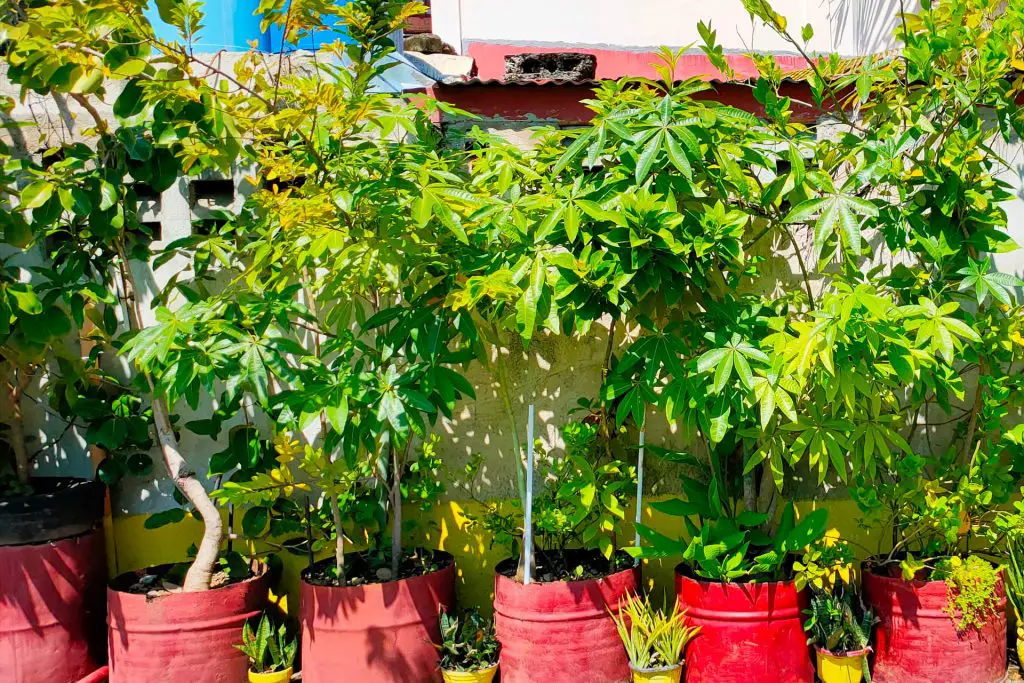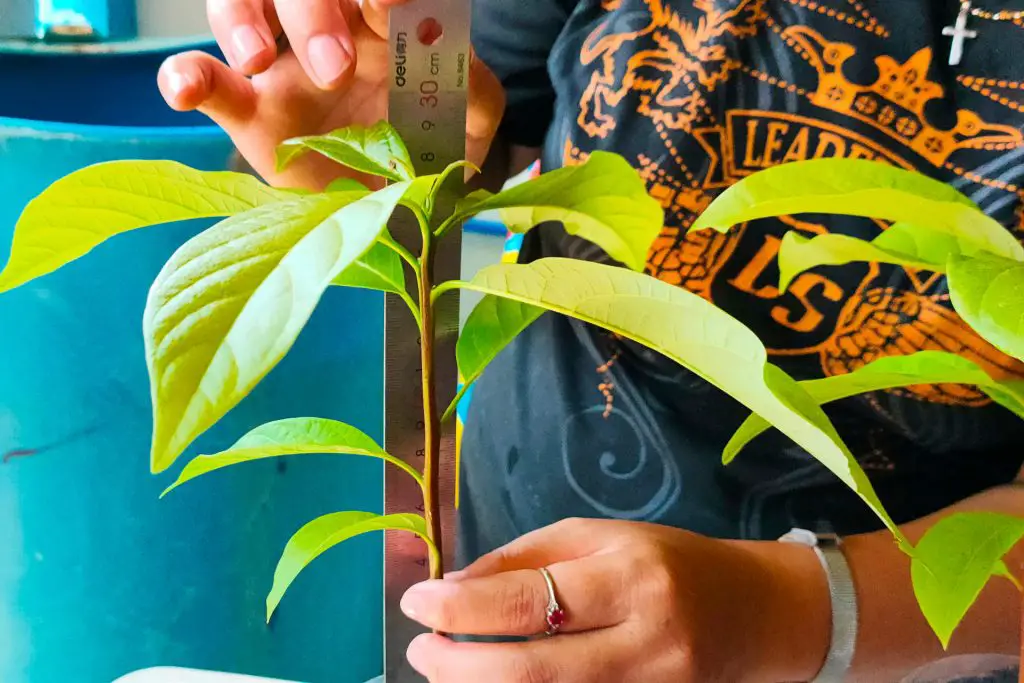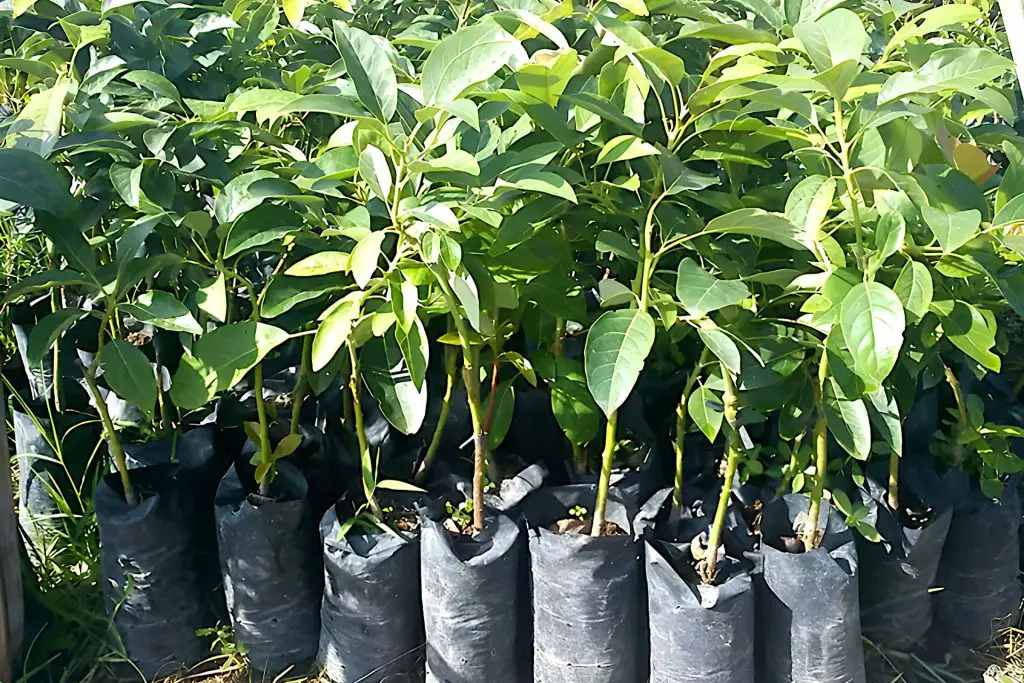Keeping Your Avocado Plant Small
Whether you want to grow an avocado tree indoors or have limited yard space there are several options and techniques that you can use to keep your avocado plant small.
There are several major factors that will affect how large your avocado tree will grow. However, there are three factors that will impact the size of your tree the most and we will look at each one of these and how you can use them to control the size and shape of your tree
The first is the way that you keep and maintain your plant through pinching and pruning from an early age, this will largely determine its size. Secondly, the variety of avocado plant you choose will have a considerable impact on the extent and regularity of the pruning required. Finally, the environmental conditions in which the plant is kept will have a large bearing on its propensity to grow and produce avocado fruit.
Why You Might Want to Keep an Avocado Plant Small

If you have limited room, wish to grow indoors, or find that a tree might cause too much shade for other parts of the yard, you are likely to want to keep your avocado tree small. There are other benefits including less watering and easier environmental requirements as we are not looking to overly encourage growth.
Limited Space for Growing
One of the main reasons to keep an avocado tree small is due to limited space. If you are growing the plant indoors, you likely don’t have the room to allow for a large tree.
Additionally, a small tree won’t cast as much shade, which could affect other plants or your lawn’s ability to access enough light to grow properly or affect the light access to your or your neighbor’s property. As an avocado tree can have the propensity to grow up to eight feet tall this can become a problem if the growth of the tree is not kept in check.
More accessible to Care For Small Avocado Tree
Another great benefit of keeping an avocado tree small is that it is easier to care for. Smaller trees require less watering and fertilizing, making them easier to maintain. Additionally, they are less likely to be damaged in storms or other extreme weather conditions if outside.
The Shape of Things
Another reason for keeping the tree small is the control of shape. When allowed to grow naturally you will notice that the tree can become unbalanced in terms of look. Often you will find that growth becomes more favored on one side than the other, these growth patterns are generally down to access to light and other natural resources.
By keeping the tree small you can more easily control the look and the shape of the tree. This is because the pruning and pinching processes you use will allow you to influence the direction and structure of the tree’s growth.
Environmental Reasons
Smaller trees are less likely to be affected by the elements. Setting out to keep your tree in a smaller form also means that they are more resilient to environmental conditions that are not native, and thus are less conducive to encouraging excessive growth.
Fewer Resources
A further benefit of growing a smaller tree is that it requires fewer resources than that of a naturally sized one. This extends to both the amount of fertilizer the tree will need and the watering you need to do.
Overall, there are many benefits to keeping an avocado tree small. A small tree is ideal if you have limited space or are growing the plant indoors. They are easier to care for and require fewer resources, making them a great choice for anyone looking for a low-maintenance option.
How to Keep Control of the Growth of Your Avocado Tree
There are various factors that influence how and to what extent your tree will grow. By managing these factors you can control the growth patterns of your tree to keep it within your desired parameters.
Pinching Young Avocado Trees to Control Early Growth

An avocado plant’s key growing phase is its formative years. By controlling its growth during this period you can help determine its overall shape and size.
When it is in its initial growth phase you want the central stem to strengthen and avoid getting a leggy avocado plant. To help with this when the plant reaches around ten to twelve inches tall you should pinch back the central stem to around half the height. You should look for a branch around this height and cut off at the node, just above the leaf.
This process will encourage lateral growth on the plant and strengthen the central stem which will become the trunk.
Annual Pruning of a Mature Tree to Maintain its Height
Pruning avocado trees is essential in maintaining and managing their height and breadth. A tree can grow more than a couple of feet a year so it is important to prune every annually.
Ideally, this should be carried out in early spring, just after the first flowers begin to open but before the majority do. Pruning at this point will allow new branches and leaves to return, which if your tree is outside, is important as it will help protect it from possible sunburn.
If you are growing a tree indoors you have more flexibility in terms of timing of your prune as there should be little risk of sunburn unless situated in a glass patio room, and you may be looking for more limited fruit yield.
How Far to Prune Back?
With annual pruning, the extent of the pruning will largely depend on how much your tree has grown and the parameters you have for the size, and whether you want a relatively bushy avocado tree.
If you are pruning annually then cutting back the previous year’s growth together with some shaping should keep the tree within the proportions that you want. In addition to height, you will also need to prune back lateral branch growth. It is important to remember that the majority of fruit is produced at the extremities of the branch.
Bearing this in mind you should look to prune back the lateral growth to the point where you want your fruit to set. Remember when you prune you should prune just back of where you want the tree to be, so that there is room for leaves to develop to protect the fruit from the sun and the cold in winter.
Variety of Avocado Tree Grown

One of the most important impacts on the size of the avocado tree is going to be the variety. If left to grow naturally most varieties will grow to up to thirty feet tall with many growing up to sixty feet and some even to eighty feet. The higher the propensity for a tree to grow the more work that will be required to keep it within your desired parameters.
If you have a choice, you might want to take into consideration the variety of tree that you want to grow. The most common type of avocado tree is the Hass, mainly because it is generally the variety of fruit sold in grocery stores and it usually will grow from the avocado seed within. The Hass variety can grow naturally to around 30ft.
However, because each tree produced from seed is a hybrid, you will not get true Hass fruit, if any at all, as avocados, as a plant, are not ‘true to seed’. If you do want a true Hass clone or if you want a tree that will produce fruit of fruit more quickly, you can get them grown from cuttings as saplings from most nurseries or online.
The Reed variety grows slightly smaller than the Hass, reaching on average 20-25 feet, and likely to be more manageable. These can comfortably be pruned to kept to around 10ft or less in height.
Growing even smaller is the Bacon Avocado tree. This can grow on average from between 15-20ft in height, again making it even more manageable in limited yard space with minor pruning or as an indoor plant with a good pruning strategy. Many nurseries will have this variety or if not be able to order it in for you or you can purchase it online.
You can also look to grow a dwarf avocado tree. A dwarf avocado tree can grow between 6 to 10 ft in height and as such will need far less pruning and maintenance than other varieties. The most common type of dwarf avocado tree is the Wutz (Little Cado) and it is the only true dwarfed avocado plant variety. It will still produce fruit, around 15-20 avocados a season if kept correctly, and can be purchased in many nurseries.
Keeping Your Avocado Tree in The Right Environment
If you want a strong, healthy plant, the environmental conditions in which you grow are important. You want your plant to be small because of your maintenance rather than through stunted growth because of a poor environment.
Avocados are tropical plants and so do best in warm conditions. Indoor avocado plants are likely to be okay as average indoor temperatures tend to be around 65°F. If growing outside you need to grow a cold hardy avocado variety or the tree will not thrive.
Other conditions that affect the health of your tree include, direct sunlight, an avocado tree needs around 6 hrs a day, humidity levels, and proper water and fertilizing schedule.
Summary: Keep Your Avocado Plant Small
There is no doubt that whilst an indoor avocado plant or small avocado tree in your garden is a highly desirable plant to have, not least for its looks and a potential source of avocado fruits, it does require a significant amount of annual pruning to maintain it at a manageable size.
However, with careful planning in terms of choice of variety, the right environmental conditions, and a regular pruning plan and schedule you should be able to keep it to a manageable size, yet still have a fruit-bearing tree, in your yard or house.
